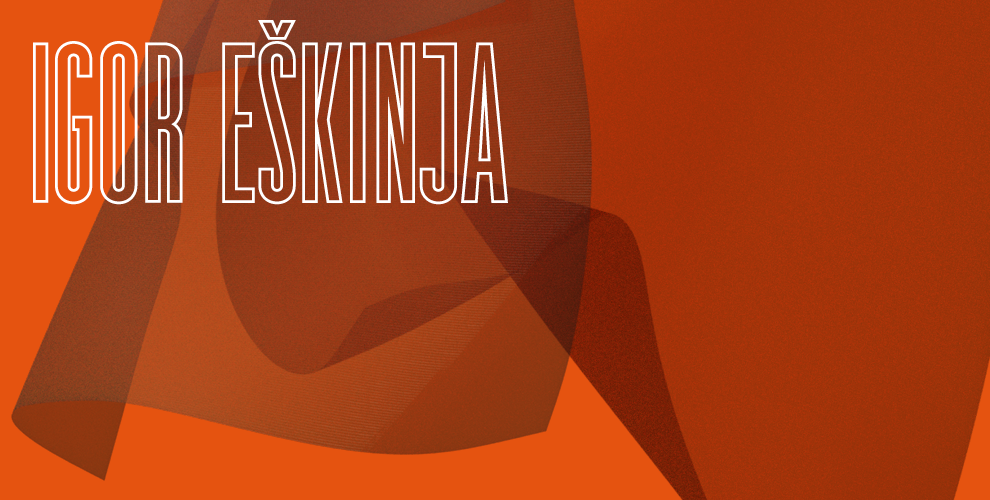The solo exhibition project for Kunsthalle Bratislava reflects Igor Eškinja’s interest in changing the narratives of the gallery premises and taking the specifics of the exhibition space as a main premise in the project.
The exhibition project was from the beginning permeated with various uncertainties. These of course, mostly related to the problems and side effects of the current situation, which has posed a peculiar challenge in the relations that emerge between artists and institutions. And this very condition can be also understood as a starting point for the exhibition concept: a subject where the artistic practice becomes an echo of relations, procedures, rules, processes, and which are in this case completely absent. Probably the most forceful element of these conditions was Eškinja’s inability to physically visit and understand the exhibition space, at first felt as deficiency in the whole process, but later became a main “anchoring” point of the project.
 Graphic cooperation: Helplab.sk
Graphic cooperation: Helplab.sk
"Igor Eškinja is an artist who sensitively interprets a given space, its architectural qualities, context. His artworks are ambiguous, he works with a hint, with a duality of visible and invisible. Equally important to him is the presence of viewers, their movement in space, its performativity — together, these elements create a consciousness and tell a story." says Lýdia Pribišová, Kunsthalle Bratislava curator.
The intervention into the exhibition space involves one single element – printed synthetic transparent textile, whose intrinsic quality lies in its ability to react to the ephemerality of the exhibition space. The light and movement are not merely external factors, but essential elements in the understanding of the space, they become a centre of attention of the spectator. Printed synthetic transparent textile is not merely an aesthetic object but rather a structure that, throughout the exhibition, questions the presence of light, its intensity and how this triggers the presence of colour. Eškinja is not as interested in the sole physical appearance of colour as he is in the role that light has in a particular social and political context.
One can sense and understand that Igor Eškinja in a certain way creates a choreography between various elements, which challenge the experience of the material reality of our surrounding, and subtly connects them with the possibilities of the fleeting and momentary. Suspense between the material and something that is on the edge of the material presence, between the visual and non-visual, is created within the space. This alliance of elements, a sort of fragments of materiality that do not have a mighty formal presence, culminate in some sort of “liberation” within the exhibition.
____________
IGOR EŠKINJA (*1975, Croatia, Rijeka) lives and works in Rijeka, Croatia. Eškinja constructs his architectonics of perception as ensembles of modesty and elegance. The artist “performs” the objects and situations, catching them in their intimate and silent transition from two-dimensional to three-dimensional formal appearance. Using simple, inexpensive materials, such as adhesive tape or electric cables, and unravelling them with extreme precision and mathematical exactness within strict spatial parameters, Eškinja defines qualities that go beyond the physical aspects and enter the registers of the imaginative and imperceptible. Eškinja participated in various group exhibitions, such as Manifesta 7, Rovereto (2008); Complicity, Rena Bransten Gallery, San Francisco (2009); 28th Grafični Biennale, Ljubljana (2009); Dirt, Wellcome Foundation, London (2011), Rearview Mirror, Power Plant, Toronto, (2011); T-ht nagrada, Museum of Contemporary Art, Zagreb (2016), Every time a ear di soun – Documenta 14 program, SAVVY contemporary, Berlin (2017), and many solo exhibitions (Project for Unsuccessful Gathering, Casino Luxembourg-Forum d’art contemporain, Luxembourg, 2009; Inhabitants of Generic Places, Kunstforum, Vienna, Museum of Contemporary Art, Zagreb 2011; The Day After, Federico Luger Gallery, Milano, 2011; Interieur Captivant, MAC/VAL Museum, Vitry, 2012; Quixote, MUWA, Graz, 2014; PRODUCTIVE WORK_What Is It Supposed to Be?, Q21, Museums Quartier, Vienna, 2018).
Curator: Tevž Logar
Duration: 20. 5. 2021 – 11. 7. 2021
Place: 1st Floor
